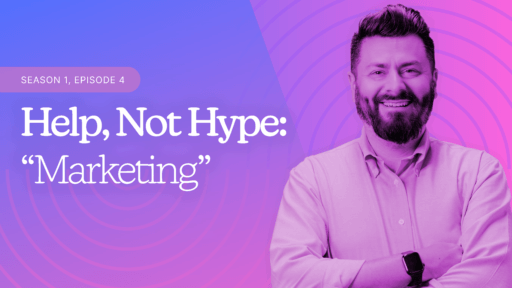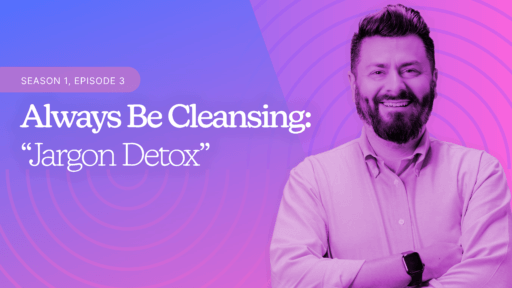“Personalization is the strongest form of differentiation in the market. If you’re not personal, you’re invisible.”
Bernadette Jiwa
Back when my kids were little, I ran a democracy. A very tiny, very loud democracy where the voters all had their own ideas about fairness. If one kid got something—be it a snack, a toy, or even a chore—the other one demanded equal treatment. “Why does he get more crackers?” “Why did he get to pick the movie?” It was as if I had accidentally signed up to lead the Snack-Time United Nations.
Being the diplomatic genius I clearly am, I attempted to maintain order by doling out everything evenly. Everyone got the same number of crackers, the same amount of screen time, and, yes, the same volume of parental exhaustion. In my mind, fairness meant sameness. And I patted myself on the back for my commitment to democracy, while internally plotting a coup to replace myself with a slightly more rested version of me.
The Personalization Epiphany
But here’s the rub: my kids weren’t the same. One liked apples, the other swore they tasted like dirt. One loved playing outside, while the other would spontaneously combust if you suggested leaving the couch. So while I thought I was being fair by giving them equal treatment, I was actually driving myself—and them—crazy. It turns out, kids don’t just want fairness. They want to feel understood.
This epiphany hit me one day as I stood in the kitchen, holding both an apple and a banana, staring at my children like I was the world’s least efficient produce manager. Maybe, just maybe, I could give one kid an apple and the other a banana, and the world wouldn’t fall apart. I tried it. The house didn’t implode. And, shockingly, they were… happy? Fewer tantrums, more smiles, and I suddenly realized I wasn’t running a democracy—I was running a customer service department.
The Emotional Impact of Personalization
Let’s be honest—personalization isn’t just about getting people what they want. It’s about making them feel special. Like they’ve been singled out from the masses, as if the universe (or at least your marketing software) has whispered in their ear, “Hey, you. We know you.”
Think about it. When was the last time you got an email that didn’t make you feel like one of 10,000 other unlucky souls on the receiving end? Now, imagine getting one that feels like it’s written just for you. It’s rare. So rare that when it happens, you almost want to frame it—or at least not immediately delete it. Personalization does that. It makes people feel seen. And when people feel seen, they feel special. And when they feel special? Well, now you’ve got yourself an advocate, someone who doesn’t just buy your product—they go around telling everyone else they should buy it, too.
It’s emotional. It’s psychological. It’s like marketing therapy, but without the hefty co-pay.
The Marketing Connection
This is the part where I make a hard left turn into marketing, but stay with me here.
In fundraising (and marketing), we often think of fairness like I did back in my snack-sharing days. We assume everyone wants the same thing, so we give them all the same thing. We write emails that treat everyone like they’ve got identical desires. But here’s the thing: people aren’t all the same, and treating them that way is like trying to feed your apple-hating kid another apple and wondering why they’re still hungry.
What we forget, in marketing, is that fairness doesn’t mean treating everyone equally—it means treating them according to their needs. It means listening, paying attention, and realizing that while some people might be into bananas, others are just here for the apples.
Personalization Through Technology
Now, I know what you’re thinking. “But Stephen, I’m working with thousands of customers, not two picky children in a kitchen. How do I give everyone what they want?” And to that, I say: You don’t have to! That’s where technology can help. From data analytics to automation, technology is your cheat code to personalization.
Whether you’re using CRM systems to track preferences, AI to suggest products, or customer journey mapping to understand behavior, technology enables personalization at scale. It lets you give each customer the feeling that you’ve crafted something just for them—without the heavy lifting. You don’t need to manually hand out apples and bananas; technology helps you figure out who craves what, so you can deliver it seamlessly. It’s a little less “produce manager” and a lot more marketing strategist.
Basically, you get to look like a genius without actually doing much work. And isn’t that the dream?
Building Real Connections
When I stopped treating my kids like some sort of snack-based assembly line and started paying attention to what they actually wanted, life got easier. Suddenly, we weren’t living in a constant state of low-grade mutiny. The same thing happens in marketing. Stop firing off generic messages and start personalizing, and you’ll wonder why you ever did it the other way.
Because at the end of the day, marketing isn’t about blasting messages out into the void and hoping someone—anyone—will respond. It’s about connection. And connection isn’t built by treating everyone the same. It’s built by figuring out what makes people tick—what they love, what they hate, what makes them throw their phone across the room at the mere sight of another email that starts with, “Dear valued customer…”
But here’s the good news: you don’t have to get it perfect. You just have to start. Segment your next email campaign based on behavior, tweak your subject lines so they don’t sound like a ransom note, and watch what happens. You’ll start to see people engage, and you’ll think, “This isn’t magic, but it’s close.”
Your job isn’t just to be fair—it’s to be personal. And when you do that, you’re not just handing out snacks. You’re building relationships that last. Trust me, those relationships are far less demanding than kids screaming about cracker inequality.






